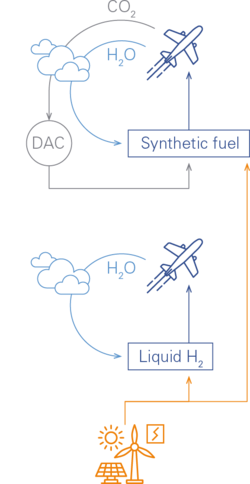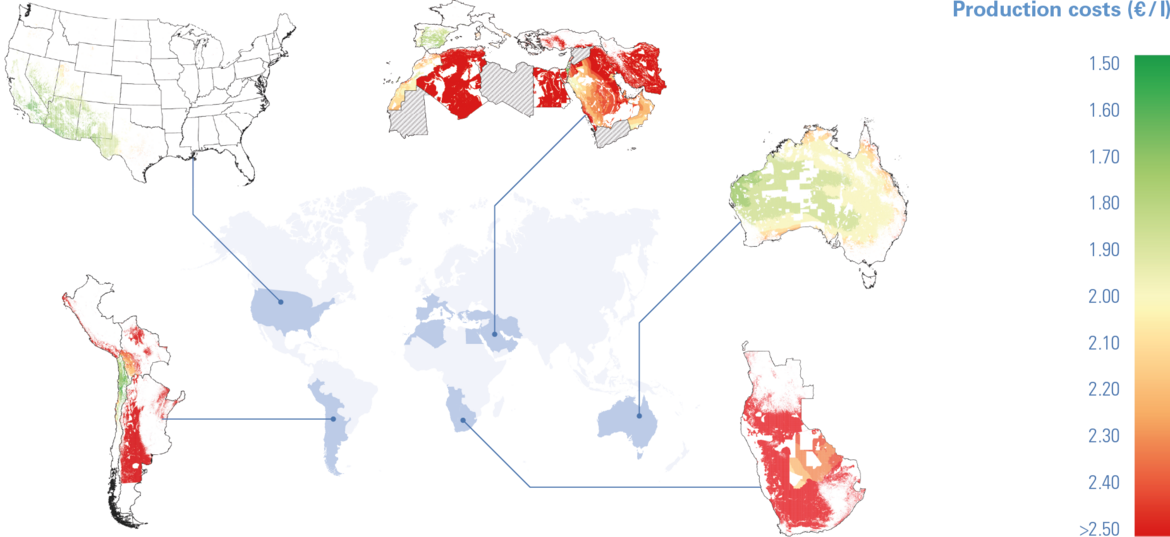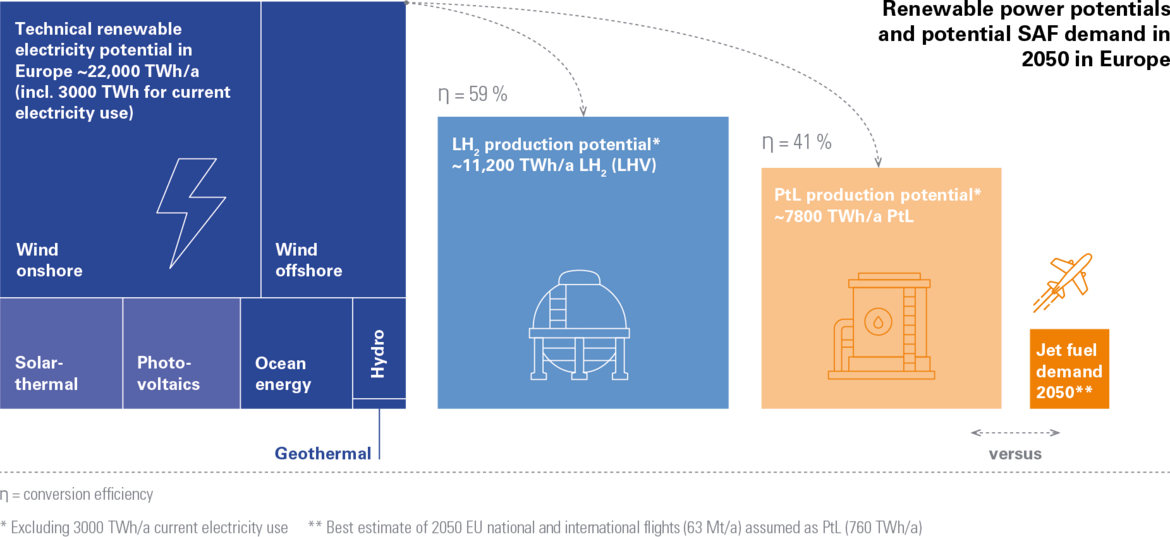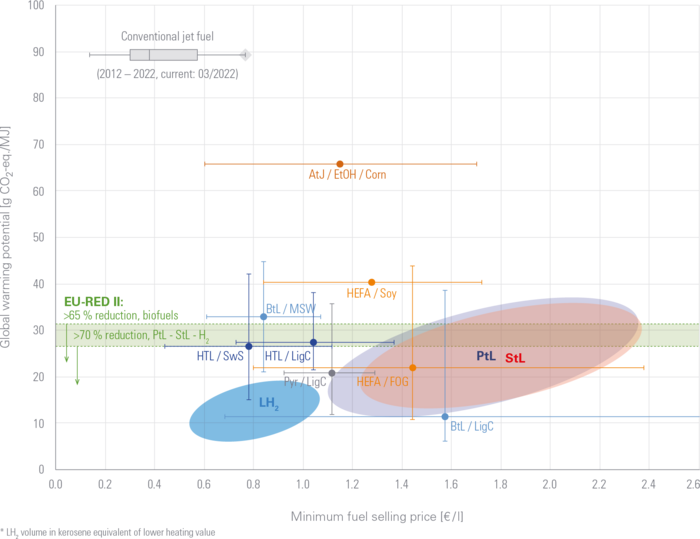The transition to 100 % renewable fuels is essential to pave the way toward climate-neutral aviation. Specific to aviation are long product life cycles and the limitations of battery-electric flight. Drop-in capable sustainable aviation fuels (SAF) are required to realize a timely decarbonization of the global fleet. Bauhaus Luftfahrt identified sustainability at scale, circularity, climate impact, and economic viability as major challenges of such a fundamental transition.

Transition to 100 percent renewable energy with hydrogen and synthetic jet fuel that closes the carbon loop.
While initially bio-based fuels were in the focus of our research, their limitations led to a shift in focus toward renewable fuels of non-biological origin. For a comparison of a wide variety of fuel technologies, a multiple-criteria assessment framework was developed with environmental impact and production cost as key indicators, among others.
The scale of the future energy demand, fuel production potentials, the technological viability of fuel pathways, production capacity ramp-up, life-cycle quality, and various economic considerations were the subject of many assessments. Investigations of biofuel pathways pointed to a severe limitation of sustainable feedstock for first-generation biofuel production. Technologies for the conversion of advanced biogenic feedstock can add significant fuel production potentials, but require continued research and development efforts to achieve commercial readiness.
Early on, Bauhaus Luftfahrt researched the potential of non-biogenic sustainable solutions, such as “green” hydrogen, sunlight-to-liquid or power-to liquid technologies. Geo-referenced analyses of fuel production potentials showed their scalability beyond the future demand. For drop-in fuel production, direct air capture of CO2 needs to be developed due to the limited availability of biogenic carbon sources. Renewable electricity from photovoltaic and wind power have great potential for use in aviation primarily via hydrogen in liquid form or in drop-in capable hydrocarbon fuels. In which form hydrogen will eventually be used best in aviation is subject of current research and will be linked to economic considerations and to the climate impact as a figure of merit.
Production costs for solar-thermochemical fuels by world region
An analysis of sunlight-to-liquid fuel production costs in regions with high solar irradiance showed that there is a global production potential beyond the anticipated global demand, and in combination with low financing costs, at costs substantially below €2 / litre (year 2020).
Beyond biofuels: sustainable scaling potential of liquid hydrogen and power-to-liquids
Power-to-liquid (PtL) studies performed for the German Environmental Agency addressed the potentials of renewable power, green hydrogen and PtL in comparison with the anticipated SAF demand in 2050 in Europe (years 2016, 2021, in cooperation with Ludwig-Bölkow-Systemtechnik).
Cost and environmental impact of key aviation fuel options
A map of the “landscape” of sustainable aviation fuel options, showing the global warming potential versus production costs in relation to conventional jet fuel. Included for reference are the ICAO default emissions for AtJ from corn ethanol and HEFA from soybeans, as well as the threshold values from the European Renewable Energy Directive (EU-RED II) (year 2021).
Feedstock: Corn = corn grain; EtOH = ethanol; FOG = fats, oils, and greases; LigC = lignocellulose; MSW = municipal
solid waste; Soy = soybean oil; SwS = sewage sludge.
Conversion: AtJ = alcohol-to-jet; BtL = biomass-to-liquid; HEFA = hydroprocessed esters and fatty acids; HTL = hydrothermal
liquefaction; LH2 = renewable liquid hydrogen from electrolysis*; PtL = power-to-liquid; Pyr = pyrolysis; StL = sunlightto-
liquid; LigC = lignocellulose; MSW = municipal solid waste; Soy = soybean oil; SwS = sewage sludge.
Data source: Emission data of conventional jet fuel and first-generation biofuels (AtJ / EtOH / Corn, HEFA / Soy) from ICAO
document “CORSIA Default Life Cycle Emissions Values for CORSIA Eligible Fuels”, 2nd Edition, March 2021; Advanced
biofuels data from Bauhaus Luftfahrt literature research compendium; Performance ranges of LH2, PtL, and StL from
Bauhaus Luftfahrt research and publications.



